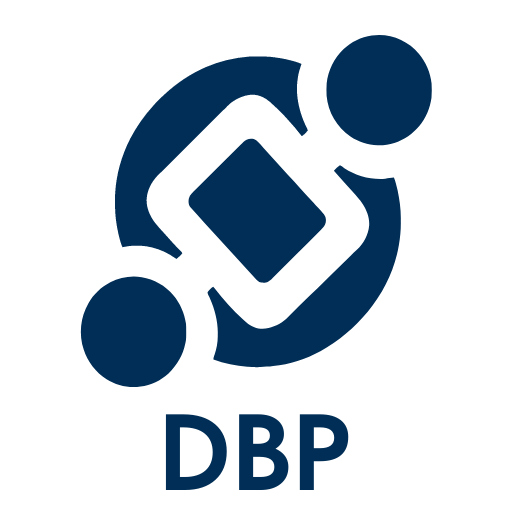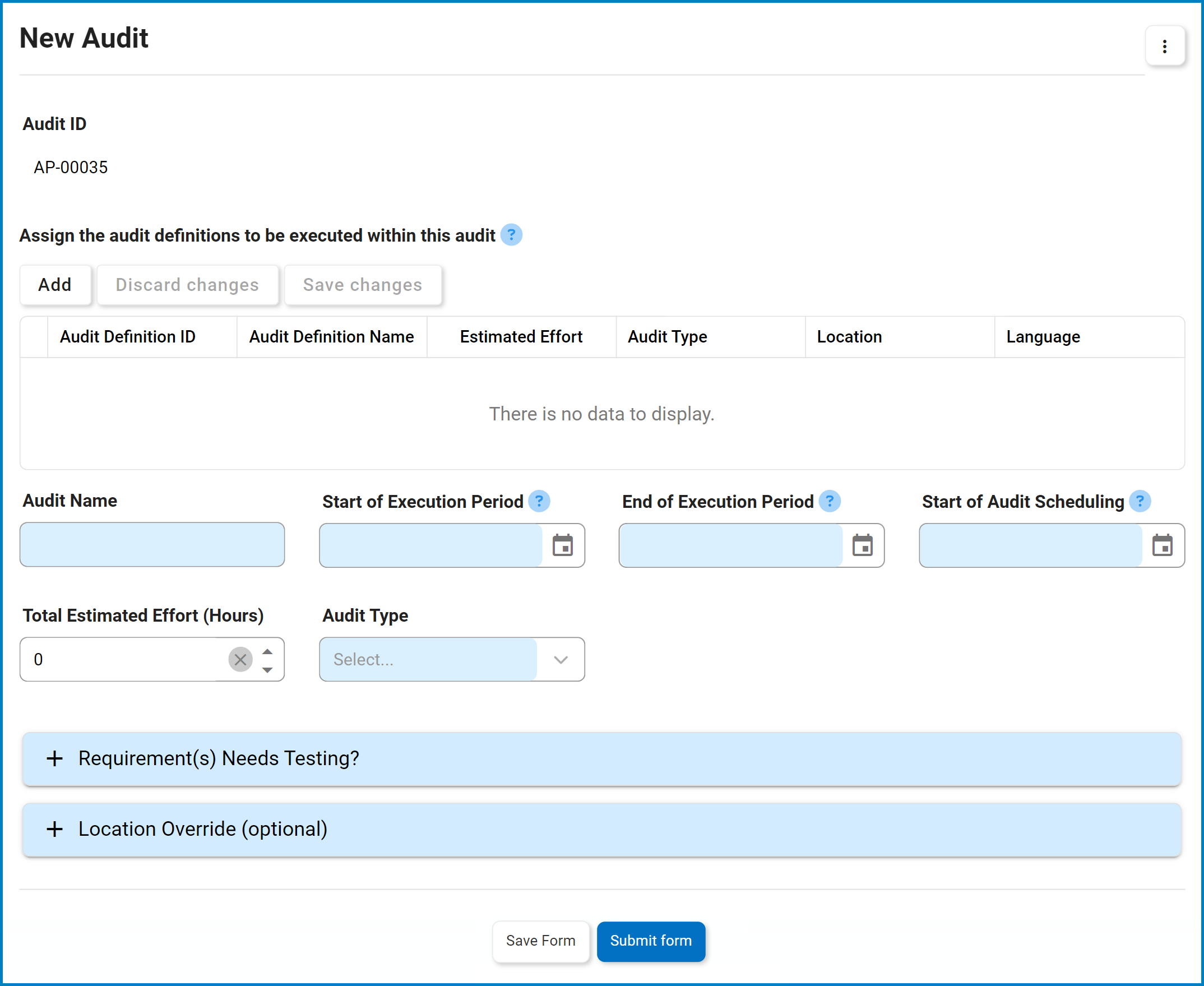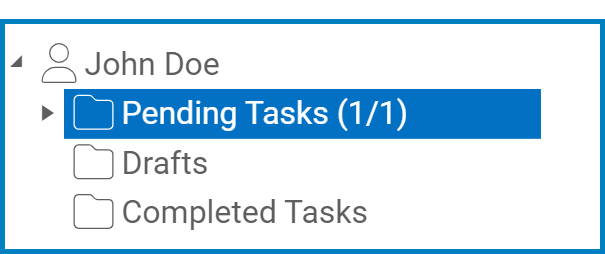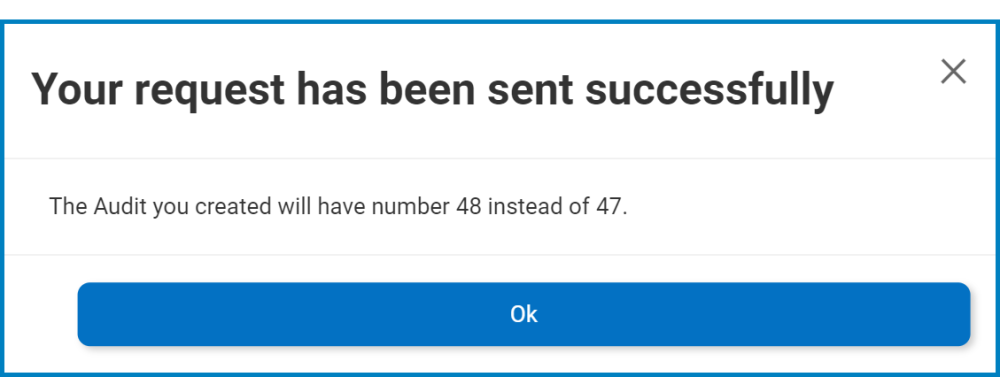In the New Audit Plan form, users can select one or more defined audits and prepare them for scheduling and execution.
- Audit ID: This field is automatically populated with a unique identifier for the audit. It ensures that each audit can be distinctly referenced and tracked within the system.
- Add: This button allows users to add an audit definition, setting it up for execution.
- If selected, it will display the Add Audit Definition form.
- If selected, it will display the Add Audit Definition form.
- Audit Name: This is a text field that allows users to input a name for the audit. It is a mandatory field.
- Start of Execution Period: This is a date picker that allows users to input/select the date when the audit execution will begin.
- End of Execution Period: This is a date picker that allows users to input/select the date when the audit execution will conclude.
- Start of Audit Scheduling: This is a date picker that allows users to input/select the starting date for scheduling the audit, ensuring a timely and organized audit execution.
- Total Estimated Effort (Hours): Once an audit has been selected for execution, this field will automatically display the total number of hours estimated for its execution.
- If multiple audits are selected, this field will display the combined total of hours.
- If multiple audits are selected, this field will display the combined total of hours.
- Audit Type: This is a single-select dropdown field that retrieves the list of predefined audit types. It is a mandatory field.
- If a single audit definition is selected, this field becomes disabled, displaying only the audit type associated with the selected audit definition.
- If multiple audits are selected, this field reverts to being an active dropdown menu, enabling users to choose the relevant audit type applicable to all selected audits.
- Accordions: The form includes two collapsible sections, known as accordions, which each serve a specific purpose.
- Save Form: This button allows users to save the form.
- If saved, the form can be found in the Drafts folder of the Task Navigation Pane.
- If saved, the form can be found in the Drafts folder of the Task Navigation Pane.
- Submit Form: This button allows users to submit the completed form.
- To maintain the integrity of the Audit Plan ID system, we have implemented a validation mechanism. When users select this button and are ejected from the New Audit module, a pop-up window may appear with the following message:
- After submission, the audit remains inactive until the specified Start of Audit Scheduling date is reached.
- Upon reaching this date, the system automatically triggers the Schedule Audit task, assigning it to the designated team leader.
- Upon reaching this date, the system automatically triggers the Schedule Audit task, assigning it to the designated team leader.
- To maintain the integrity of the Audit Plan ID system, we have implemented a validation mechanism. When users select this button and are ejected from the New Audit module, a pop-up window may appear with the following message:






Post your comment on this topic.